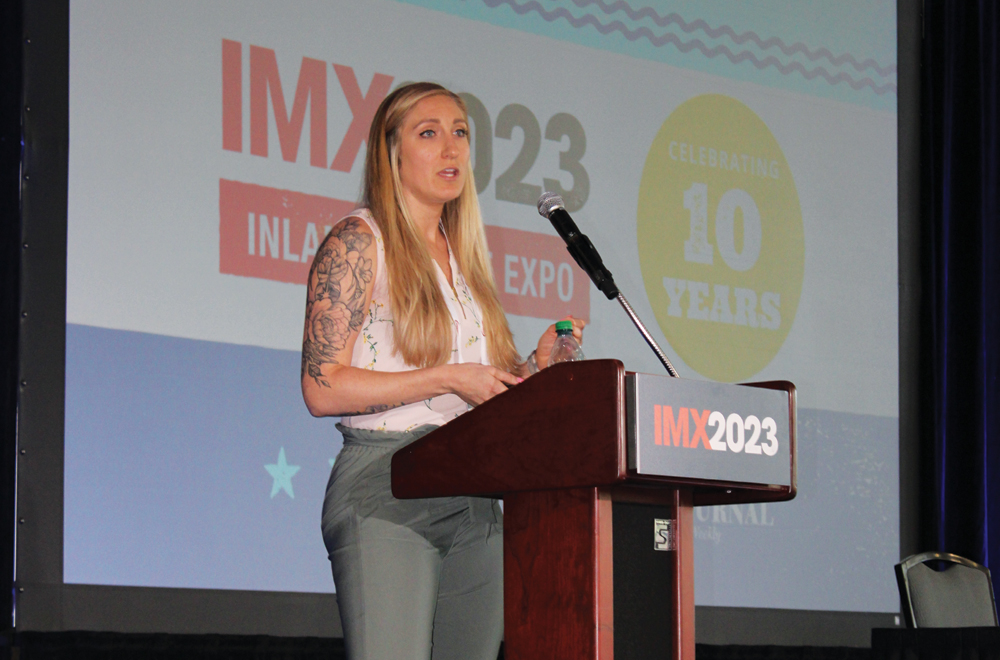This year’s Inland Marine Expo education session focused on safety addressed inhalation hazards.
IMX, sponsored by The Waterways Journal, was held May 31-June 2 in Nashville, Tenn. It will return to Nashville May 29-31, 2024.
Titled “Inhalation Hazards in the Marine Industry and How to Keep Workers and the Community Safe,” the session was led by Dr. Dana Currie, a project toxicologist with the Center for Toxicology and Environmental Health. The CTEH provides environmental consulting and response and is based out of Little Rock, Ark., although it has seven office locations and six remote consultants. Clients include those in the marine, railroad, petrochemical and other industries.
Currie began her speech by speaking about the advantages of marine transport, with a focus on agricultural commodities, chemicals, minerals, ores and aggregates.
“It’s very cost-effective and efficient for moving different types of goods,” she said.
When exposure to potentially hazardous substances happens on a tow, she said, it typically comes from either inhalation or from touching a contaminated surface.
If someone is affected by inhaling a hazardous substance, she said the effects could vary greatly.
“It’s all going to come down to dose, how long it is in the air and how long someone is exposed and at what level,” she said.
The likelihood of exposure can be prevented or mitigated in several ways, she said. One is by attention to vessel design.
“If you have a kitchen or a break room next to an engineroom, the indoor air quality is going to be a concern,” she said as an example.
She urged companies to conduct chemical specific training and awareness and for that training to check understanding of the proper use of personal protective equipment, including respirators, gloves and suits, when to use what types of PPE, what the limitations of specific types of PPE are and how to choose the right PPE for a situation.
It is also important, she said, to remember that PPE is the least effective mitigation measure, and should be used only when elimination, substitution, engineering controls or administrative controls aren’t possible.
She urged elimination or limitation of the need for open gauging and sampling where possible, along with the use of closed systems and air movers. In some cases, she said, reducing risk is a matter of taking a few steps back, moving workers upwind of a source, limiting the number of workers present at a source or adding cautionary signs.
While attention to the situation at hand is always an important part of preventing exposure, she warned, “Being in a hurry makes it more difficult.”
Finally, Currie said, it is important not just to have safety measures in place but to ask, “How do we know if these controls have been effective or not?” That could include routine air monitoring and sampling, she said. She recommended both rapid data collection techniques and longer-period studies to provide a better idea of short-term and long-term exposure to crewmembers.




